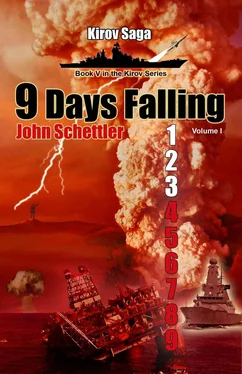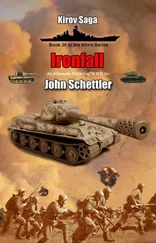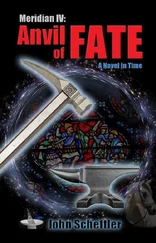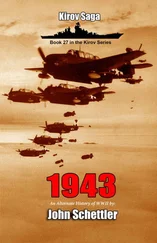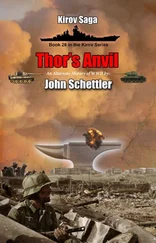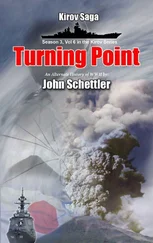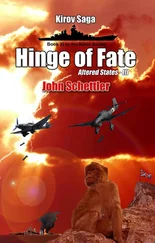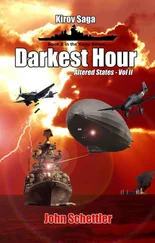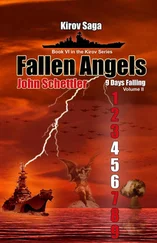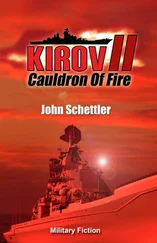The incident clearly illustrated the desperately conflicted nation as they faced the prospect of final humiliation and defeat. Some men obeyed the Emperor’s order to cease hostilities when it came, and others did not, preferring death to dishonor in accordance with the Japanese code of Bushido.
To persuade the Japanese, the Americans had secretly moved two atomic bombs to Tinian, and were fully prepared to use them in spite of what they had endured in the North Atlantic at the hands of a similar weapon—an incident the American public, and few in the military, ever knew of. The announcement of surrender prevented that horror.
“Well if the goddamned holy highness just announced the surrender of Japan,” said Gates, “then why are they still fighting? What gives, LTC?”
“Somebody didn’t get the message, that’s what gives. There’s a big air duel going on right now over Tokyo, because some of our boys didn’t get the order to stand down until they were already engaged.”
“Well aren’t we going to do something about this, sir? I mean, we can’t let the Japs keep taking pot shots at our ships and subs, can we?”
“They’ll do something about it, Gates, but that’s well above your pay grade. You just get over to that desk there and sort through the rest of those intercepts. I want everything filed in two hours. Got that?”
Several stars above Gates on the pay grade chart, other men were considering the same situation that morning, and they didn’t like what they found out. They got word from Babe Brown’s TF.92 and started listening in on his radio traffic. It didn’t sound good, and while doing so they also heard radio traffic signaling to a vessel named Kirov . It came in and out, repeated, faded, returned.
The incident with Brown’s task force had suddenly turned the watchful eye of US Naval Intelligence north to the lonesome and mostly deserted islands of the Kurile archipelago. A relief force was immediately dispatched to render assistance to TF.92, and inquiries were discreetly made to the Russian Pacific Fleet in Vladivostok, where it was learned that they had a pair of patrol ships off the northern Kurile islands for a security operation, one of which was named Kirov .
It was a sublime coincidence, and it would have ramifications no one could foresee at that moment. The US informed the Russian Pacific Fleet Commander of the incident involving TF.92 and told them American fleet units would be investigating. Vladivostok said they knew nothing about the incident. Halsey wasn’t going to fool around any longer. If the Russians wanted to get pushy, he’d show them what they were up against. He was on the radio discussing it with Nimitz who was at fleet headquarters on Guam.
“This couldn’t be a Japanese ship,” he said. “We’ve accounted for most every major combatant they have.”
“Well it was enough to give Babe Brown one hell of a bloody nose,” Nimitz came back. “What did we miss, Bull? What’s the report say?”
“Three ships, Admiral. One reported as a heavy cruiser or bigger. Brown says they might have been a Russians.”
“Russians?” The surprise was evident in Nimitz voice. “MacArthur has been all up in a tizzy fit over Russian intentions up there. He thinks they’re planning to occupy Hokkaido.”
“They don’t have the naval forces for that,” Halsey said quickly. “Word is they were barely able to support a landing in the Northern Kuriles. They try anything on Hokkaido and the Japanese will fight.”
“Yes, and if they fight there then this cease fire and surrender agreement could go right down the tubes. That’s why we need to put the fear of the Lord into the Russians, Bull. Who do we have up there who could send them a message?”
“I have just the man we need,” said Halsey. “My old flight instructor.”
Task Group 38.3 had been operating in the Tokyo area, and was steaming about 150 miles off the eastern coast of Honshu on August 15, 1945. It was a fast carrier task force under distinguished fighting officer, Rear Admiral Clifton Sprague. Nicknamed “Ziggy” at the naval academy because of his wildly animated gait, Sprague had come up through the ranks from posts on lowly oilers and cargo vessels and also helped pioneer naval aviation, where he trained Admiral, Bull Halsey himself. He served on Lexington and Yorktown before the war, and eventually achieved command of the newly constructed carrier Wasp , CV-18. He fought with her at Saipan and the Philippine Sea, reaching the rank of Rear Admiral at the young age of 48 years. In October of the previous year his task force of escort carriers dubbed “Taffy 3” had fought off the main Japanese Center Force at the Battle off Samar Island.
One of the largest engagements in naval history, Sprague’s gallant destroyers and “jeep carriers” confronted a powerful Japanese naval force under Vice Admiral Takeo Kurita including six heavy cruisers and four battleships, one of which was the venerable Yamato . That ship had not participated in a naval engagement in anger since she tangled with a mysterious raider off the southern tip of Papua New Guinea three years earlier, but she lived to fight this one last time before joining her sister ship Musashi at the bottom of the sea.
So as big as the Pacific Ocean was, the lines of fate crossed and tangled with one another, and the battlecruiser Kirov was somehow at the heart of it all. Two men would soon meet on the high seas, and both had faced and fought Yamato in the only two engagements that battleship fought during the war.
It was Sprague’s gallantry in the battle off Samar that earned him the Navy Cross, and installed him as one of the US Navy’s true fighting Admirals. He would go on to see action at Iwo Jima and Okinawa, and then take command of the fast Carrier Division 2 with his flag set on VC-14, the Ticonderoga . That ship, along with the carriers Wasp , Monterey , and Bataan, formed the heart of TG.38.3, which had just finished pounding Hokkaido as the war ended. With news of unfinished business up north and the Russians on maneuver, Halsey ordered Sprague to “get up there and have a look around.”
The fighting Admiral was eager to oblige. He steered his carrier group north with the battleships South Dakota , North Carolina , four cruisers and sixteen destroyers in escort, and a couple of radar pickets out in front, the Benner and Southerland . It seemed overkill in many ways. Third Fleet Commander Halsey knew that Japan was beaten and had already surrendered. Yet being a little edgy over Soviet intentions for Northern Japan, the relief force he would sent north would be substantial this time.
“I’ll send Ziggy Sprague,” said Halsey. “He’ll get the job done, and then some.”
Nimitz agreed with Halsey that a brief show of force up north would discourage Russian ambitions in the region easily enough. After all, what could a small Russian force in the Kuriles led by a patrol boat named Kirov do in the face of such overwhelming American naval power? He would show the Soviets what a real navy looked like, and Sprague was just the man for the job.
Yet Halsey had not reckoned on the presence of another ship named Kirov that day, nor on the ambitions of one Russian officer commanding a small flotilla of three ships cruising in the Sea of Okhotsk.
~ ~ ~
Theyhad called it the “Month of Fire,” when the carriers swarmed around the Japanese home islands and relentlessly dismantled the last of Japan’s war fighting capacity for air/sea operations. At long last it was over, though a few cinders were still burning hot, or so it seemed.
Читать дальше
